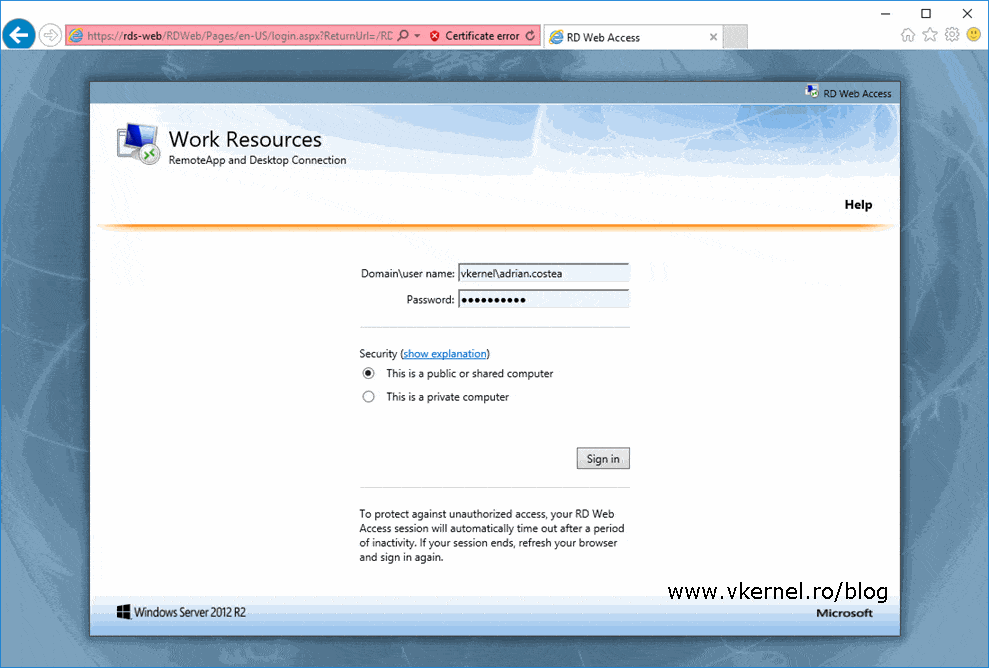

This process took us 15 seconds to complete instead of half the day AND it did not break the HA configuration! Of course, it is important to change to your current active Connection Broker found in the first step and to change the to your NLB DNS name. Set-RDClientAccessName -ConnectionBroker -ClientAccessName Then opened an elevated PowerShell prompt and ran: First, we set the active RDCB server by going into RDMS > Overview -> Deployment Overview, Tasks -> Set active RD Connection Broker Server. There were two simple steps needed to make the change. Fortunately, PowerShell was AMAZING and helped solve the problem! Implementation Unfortunately, this field was not editable and to change it, via the Remote Desktop Manager, would mean we would have to break HA and rebuild it. In this window, we could see “High Availability settings” and the field for the DNS Round Robin name. We opened Windows Server 2012 Server Manager -> Remote Desktop Services -> Overview -> Deployment Overview, Tasks -> Edit Deployment Properties (see Figure 1). SolutionĪs we assessed the situation, we came up with several possible solutions: add a certificate for the name, get a SAN certificate, or use the NLB again for RDCB instead of DNS Round Robin. As a result, the certificate was no longer valid.

When the RDCB connection was made, the certificate warning popped up and indicated the site had changed from to. This configuration worked well until we deployed the certificate. Then, we used DNS Round Robin for the Connection Broker with two DNS entries for for the separate IP addresses of the VMs. We used a single DNS name –, which pointed to the Cluster IP for NLB.

Following the Microsoft guide, we built a Network Load Balancer (NLB) for the machines’ Web Access servers. For High Availability with only two hosts, we chose to use two virtual machines (VMs) each with the Web Access and Connection Broker (RDCB) roles. On a recent project, we deployed Windows Server 2012 Remote Desktop Services (RDS) and came across a particular inconvenience.


 0 kommentar(er)
0 kommentar(er)
